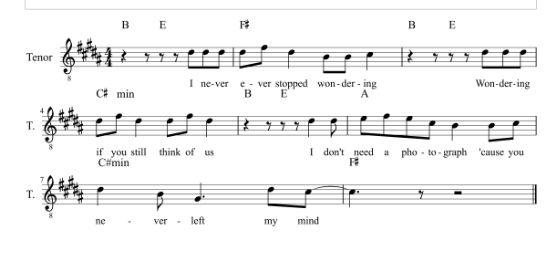Two current chart hits. The Mars song subverts rhyming expectations when line two of the verse doesn't rhyme with line one. This is nice in itself, but nicer still when he goes the extra mile and a half by (also unexpectedly) rhyming line three with line one and line four with line two.
The fifty-one second chorus in the Timberlake song strikes me as something utterly extraordinary. Its length, of course, is outrageous, but what a construction the entire thing is. There are two parts to it, but both occur over the same chord progression. The composers shape the sense of two distinct parts out of melodic configurations.
The first part consists of what are essentially eight lines of text, with line five rhyming with line one and line eight rhyming with line four. Lines six and seven involve a single, extended melody and are essentially one long line.
In the second part, you finally get the refrain line twenty-five seconds into the chorus. This section is more melodically concise, has more immediate rhyming, and repeats the refrain line at the end, creating a sense that it's truly a sort of
chorus on top of a chorus.
As if all of this weren't enough, there's a combining of lines five and six as one long melodic passage, echoing the similar event in the first section even though these two parts are otherwise melodically distinct.
